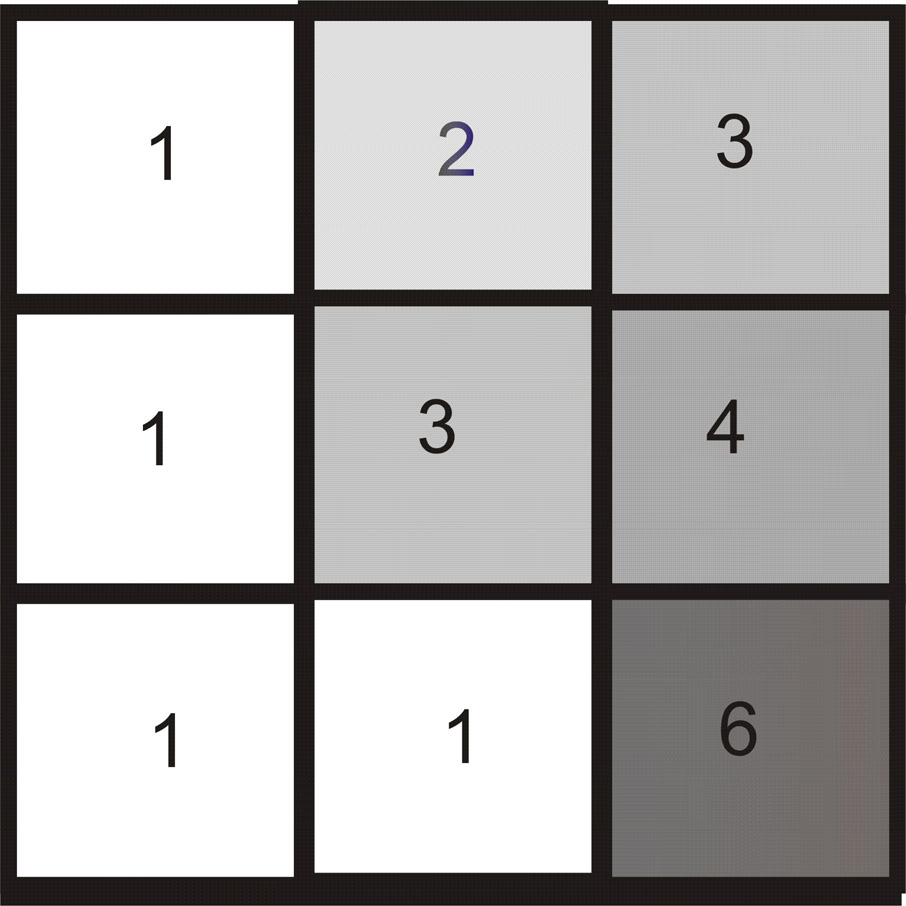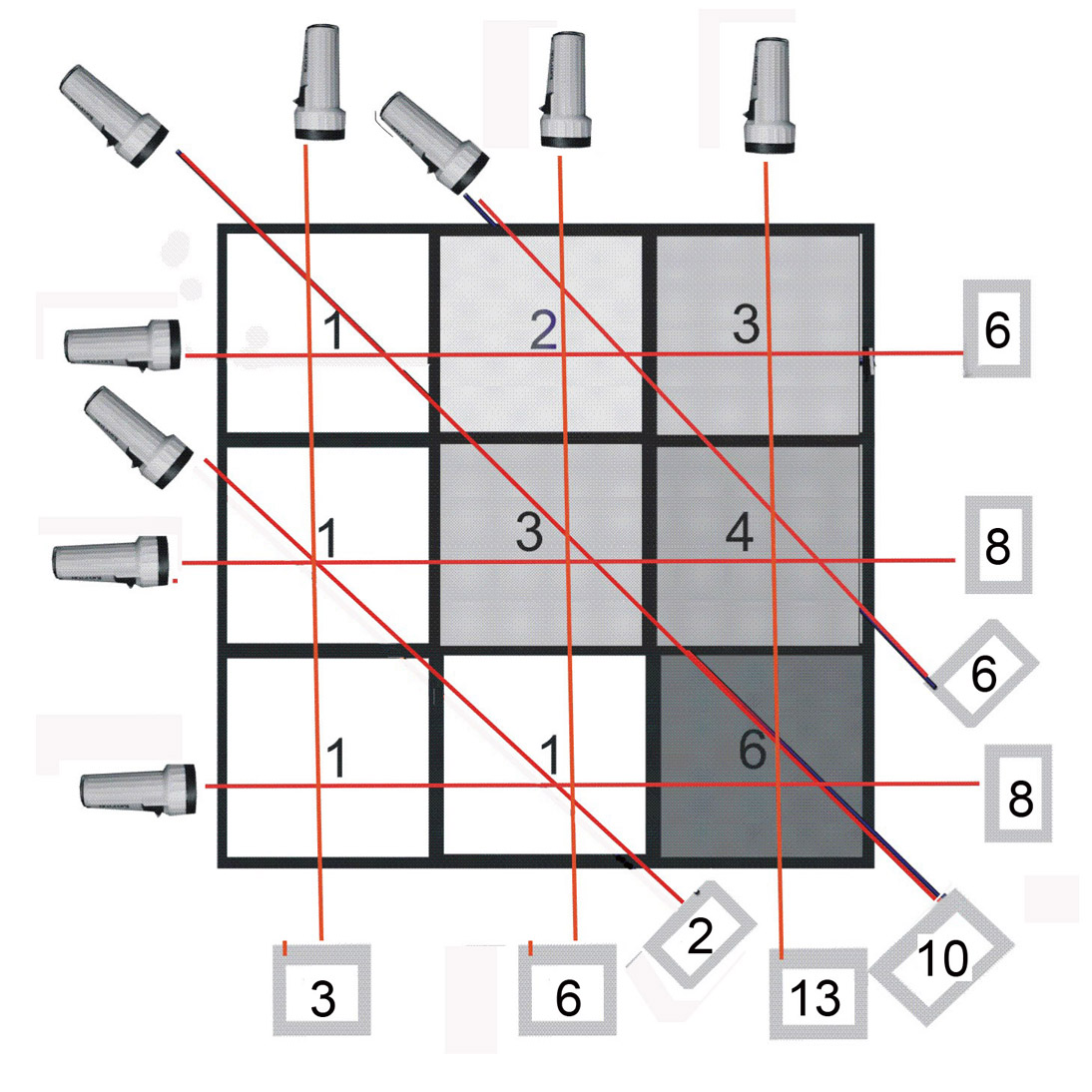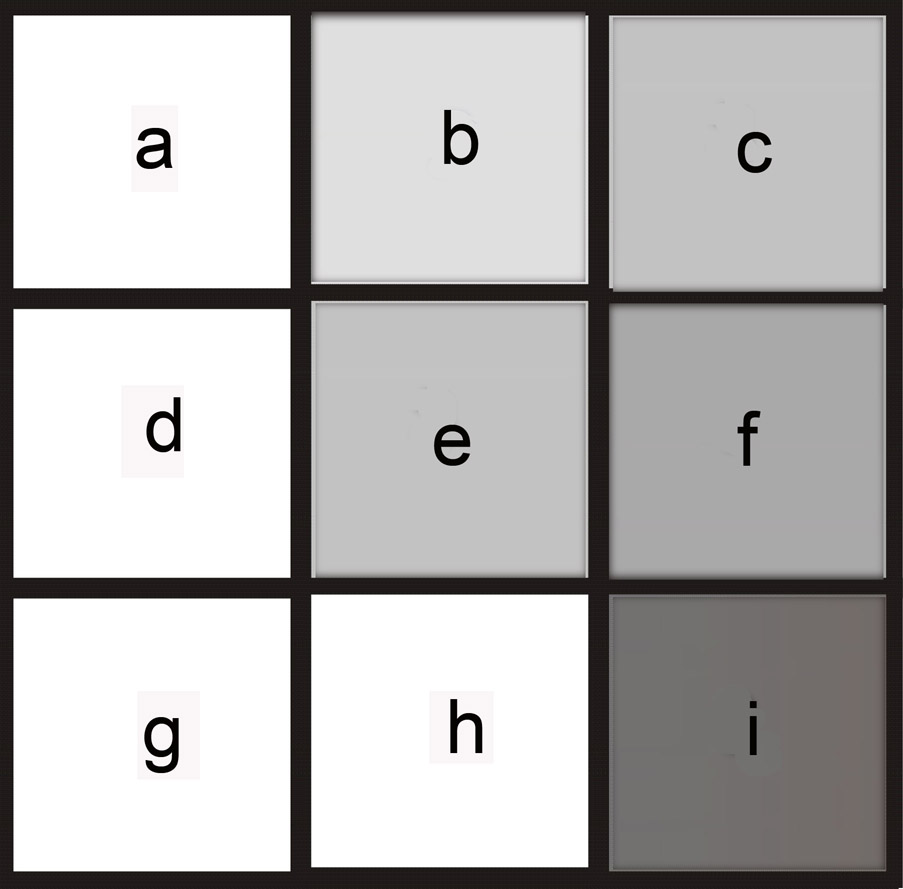

An attempt to explain how the idea was conceived to extract the data from a cross section of tissue.
| |||
 |
| ||
Now we have to shine pencil beams through the sample and collect the amount of light or x-rays transmitted. | |||
 |
| ||
At this stage the densities in the nine squares are unknown. | |||
 |
| ||
Referring back to the picture with the torches, we can see the following: | ||
| Nine unknowns and nine equations. Now these equations can either be solved longhand or by means of the Excel “Solver” function which can be found under the Excel “tools“ tag. If you don’t have this on your Excel you can download it.
Help can be found at http://www.dslimited.biz/excel_tutorials/simultaneouslinearequations.html
But if you don’t want to go to all the trouble to solve the simultaneous equations you can take it from me that they do solve back to the original values which I show at the beginning. |
|
The one thing this does show is that even for a tiny little 3x3 sample there are a lot of equations. So you can just imagine how much calculation would be involved for a high definition sample. It is no wonder that the CT scanner got better over the years as computer power gradually increased. (My long time colleague has reminded me that the simultaneous equation route is only by way of illustration. In practice it had to be done differently because the presence of noise in the readings meant that there wasn't a perfect solution and so an "iterative" approach was used and generated a picture much more speedily than the conventional way of solving the equations. Later even this was improved by a what he called a "filtered back projection" that was even more efficient! > |